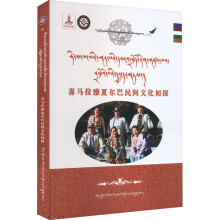Chapter 1 Intercultural Communication001
1.1 Introduction of Intercultural Communication 003
1.2 History of Intercultural Communication 005
1.2.1 Intercultural Communication in America 005
1.2.2 Intercultural Communication in China 006
1.3 Classifications of Intercultural Communication 007
1.3.1 International Communication 008
1.3.2 Interethnic Communication & Interracial Communication 008
1.3.3 Interethnic Communication 008
1.3.4 Interregional Communication 009
1.3.5 Intracultural Communication 009
Further Reading 017
Exercises 025
Chapter 2 Communication028
2.1 Definitions of Communication 029
The Function of Communication 032
2.2 Components of Communication 034
2.3 The Models of Communication 037
2.3.1 Linear Model 037
2.3.2 Circular Model 038
2.3.3 Contextualized Model 038
2.4 Communication Skills 039
2.4.1 Speaking Skills 040
2.4.2 Writing Skills 040
2.4.3 Reading Skills 040
2.4.4 Listening Skills 041
2.5 Characteristics of Communication 042
2.5.1 Communication Is Symbolic 042
2.5.2 Communication Is Dynamic 043
2.5.3 Communication Is Interpretive 044
2.5.4 Communication Is Contextual 044
2.5.5 Communication Is Irreversible(不可逆的) 046
2.5.6 Communication Is Shared 047
Further Reading 056
Exercises 061
Chapter 3 Culture and Language064
3.1 Definitions and Classification 065
3.2 The Nature of Culture 067
3.2.1 Culture Is like an Iceberg(冰川) 067
3.2.2 Culture Is Like an Onion 068
3.2.3 Culture is Our Software 069
3.2.4 Culture Is like the Water a Fish Swims In 069
3.2.5 Culture Is the Grammar of Our Behavior 069
3.3 Characteristics of Culture 070
3.3.1 Culture Is Learned 071
3.3.2 Culture Is Dynamic 076
3.3.3 Culture Is Based on Symbols 076
3.3.4 Culture Is Integrated 077
3.3.5 Culture Is Adaptive 077
3.4 Classification of Culture 078
3.5 Language 080
3.5.1 The Relationship Between Language and Culture 081
3.5.2 The Relationship Between Language and Communication 081
3.5.3 The Relationship Between Culture and Communication 082
Further Reading 090
Exercises 095
Chapter 4 Cultural Patterns098
4.1 Introduction 099
4.2 Definition of Cultural Patterns 100
4.3 Components of Cultural Patterns 102
4.3.1 Beliefs 102
4.3.2 Values 102
4.3.3 Norms 103
4.3.4 Social Practices 104
4.4 Edward T.Halls ContextCulture Theory 105
4.4.1 High Context 106
4.4.2 Low Context 106
4.5 Kluckhohn and Strodtbecks Value Orientation 108
4.5.1 HumanNature Orientation 110
4.5.2 ManNature Orientation 111
4.5.3 Time Orientation 112
4.5.4 Activity Orientation 112
4.5.5 Relational Orientation 113
4.6 Hofstedes Dimensions of Cultural Variability 114
4.6.1 Individualism and Collectivism 114
4.6.2 Power Distance 116
4.6.3 Masculinity versus Femininity 117
4.6.4 LongTerm Orientation versus ShortTerm Orientation 117
4.6.5 Indulgence versus Restraint 118
Further Reading 124
Exercises 129
Chapter 5 Verbal Communication132
5.1 Significance of Verbal Communication 133
5.2 Language and Thought 135
5.3 Language and Culture 137
5.3.1 Language as a Reflection of the Environment 137
5.3.2 Language as a Reflection of Values 138
5.4 Language and Identity 139
5.4.1 Social identity 140
5.4.2 National identity 140
5.4.3 Ethnic identity 141
5.5 Verbal Communication Styles 142
5.5.1 Direct vs. Indirect Communication Styles 142
5.5.2 Selfenhancement and Selfeffacement 144
5.5.3 Elaborate,Exacting and Succinct styles 144
5.5.4 Personal and Contextual Styles 145
5.5.5 Instrumental Styles and Affective Styles 145
5.6 Language Diversity 146
5.6.1 Dialects and Sociolects 146
5.6.2 Taboo and Euphemism 148
5.6.3 Pidgin and Lingua Franca 152
5.6.4 Idioms 154
Further Reading 161
Exercises 164
Chapter 6 Nonverbal Communication166
6.1 Definition of Nonverbal Communication 167
6.2 Significance of Nonverbal Communication 168
6.3 Functions of Nonverbal Communication 169
6.3.1 Repeating 169
6.3.2 Complementing 170
6.3.3 Substituting 170
6.3.4 Regulating 171
6.3.5 Contradicting 171
6.4 Categories of Nonverbal Communication 171
6.4.1 Paralanguage 172
6.4.2 Body Language 174
6.4.3 Time 180
6.4.4 Space 180
6.4.5 Chromatics 182
6.4.6 Attire 183
Further Reading 188
Exercises 193
Chapter 7 Intercultural Communication Barriers196
7.1 Emotional Problems 197
7.1.1 Anxiety and Uncertainty 197
7.1.2 Assuming Similarity 199
7.2 Attitudinal Problems 200
7.2.1 Ethnocentrism 200
7.2.2 Stereotyping 202
7.3 Translation Problems 211
7.3.1 Lack of Vocabulary Equivalence 213
7.3.2 Lack of Idiomatic Equivalence 214
7.3.3 Lack of GrammaticalSyntactical Equivalence 215
7.3.4 Lack of Experiential Equivalence 216
7.3.5 Lack of Conceptual Equivalence 217
Further Reading 228
Exercises 235
Chapter 8 Intercultural Adaptation239
8.1 Introduction 240
8.2 Acculturation 240
8.2.1 Assimilation 241
8.2.2 Integration 241
8.2.3 Separation 242
8.2.4 Marginalization 242
8.3 Culture Shock 243
Factors of Culture Shock 244
8.4 Intercultural Adaptation 247
8.4.1 Honeymoon Period 248
8.4.2 Crisis Period 248
8.4.3 Adjustment Period 248
8.4.4 Biculturalism Period 249
8.5 Strategies of Intercultural Adaptation 249
Further Reading 256
Exercises 261
Chapter 9 Intercultural Communication Competence264
9.1 Imperative for Intercultural Communication
Competence 265
9.1.1 Economic Concern 265
9.1.2 Demographic Concern 266
9.1.3 Social Justice Concern 267
9.1.4 Cultural Transmission Concern 267
9.2 Communication Competence vs. Intercultural Communication
Competence267
9.2.1 Communication Competence 267
9.2.2 Intercultural Communication Competence 269
9.3 Byrams Model of ICC 271
9.3.1 Attitudes 272
9.3.2 Knowledge 273
9.3.3 Skills of Interpreting and Relating 273
9.3.4 Skills of Discovery and Interaction 274
9.3.5 Critical Cultural Awareness 275
9.4 Components of Intercultural Communication Competence 276
9.4.1 Individual Components 276
9.4.2 Contextual Components 280
9.5 How to Achieve Intercultural Communication Competence 281
9.5.1 Desire to Learn and Adjust 282
9.5.2 Decentering 282
9.5.3 Cognitive Complexity 283
9.5.4 High Selfesteem and Confidence 283
9.5.5 Innovativeness 283
9.5.6 Respect for People 284
9.6 Intercultural Communication Toward a Community with
a Shared Future for Mankind 285
9.6.1 The Connotation of the Thought of “a Community with
a Shared Future for Mankind” 285
9.6.2 Political Concern 286
9.6.3 Secure Concern 286
9.6.4 Economic Concern 287
9.6.5 Cultural Concern 287
9.6.6 Ecological Concern 288
Further Reading 297
Exercises 302
Key to Exercises305
References313
展开










